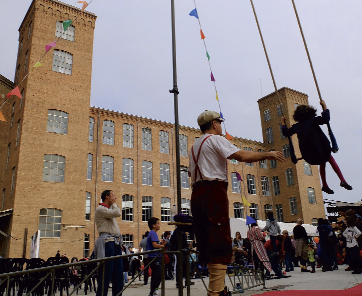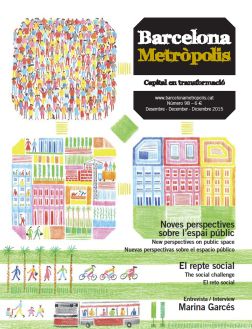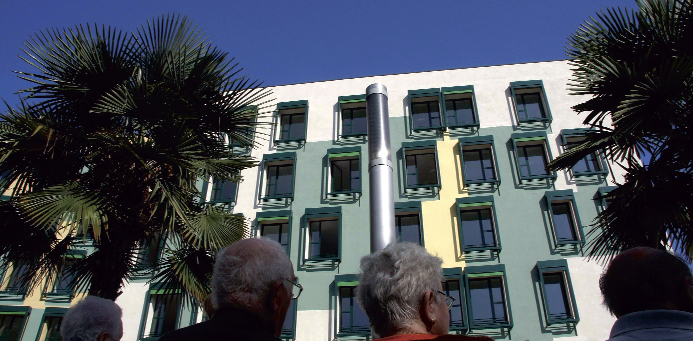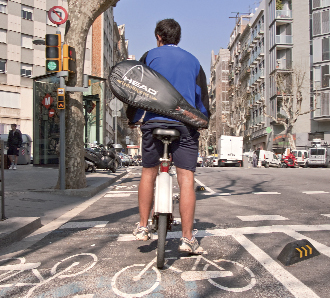Barcelona is expelling the working class from the city centre to the periphery. Gentrification and urban sprawl are two results of a single process that must be actively counteracted, as they take us away from a city model that is more mixed and compact, and consequently more just and sensible.
Now that Barcelona is embarking on a new political era, one cannot help but wonder what kind of urban development project it needs. By now, the “city of marvels” should have learned that city planning and politics are inextricably linked. The very meaning of the words are rooted in the city streets and show us that, more than a simple question of aesthetics, architecture and city planning also have an ethical dimension. Too often, evaluations of the Agbar Tower or the Hotel Vela have consisted in simply answering the question “do you like it?” However, a political take on city planning is as necessary as achieving a balance in planning policy. The transformation of the city can just as easily be a democratic tool as a weapon used in the abuse of power. And over decades of ups and downs, Barcelona has been an example of both. We have witnessed how urban reform can be put at the service of corruption, speculation, privatisation, segregation and waste: but we need it to face the environmental and economic challenges that lie ahead.
For too long, city planning has disguised its political nature, but politics can no longer underestimate its task of city development. To be clear: technocracy has been the governing force in Barcelona. Experts and the powers that be have made top-down decisions, ignoring the needs of the people. To the bewilderment of many of our institutions, grass-roots movements have had to take the lead in response to the mayhem caused by the boom and bust of the property market and of tourism. It appears that activism has now taken the City Council, to govern it from the “bottom up” and for the “common good”.However, how does that translate into planning policy?
To start with, we need to have a more empathetic view of the social fabric that lives in the urban fabric. To stop looking at it from above as though it were a chessboard (not to say a Monopoly board) with criss-crossing strategies that are too complex for the city dwellers to understand. This distanced perspective has stopped technocratic city planning seeing something that residents experience first-hand, that Barcelona is expelling the working class from the centre out to the periphery. Gentrification and urban sprawl are two results of a single process that must be actively counteracted, as it takes us away from a city model that is more mixed and compact, and consequently more just and sensible. City planning carried out from a pedestrian’s horizontal point of view would have noticed the effects of this centrifugal dynamic that seriously damages the four spheres of everyday city life. It was not hard to know what these spheres were: every morning, we leave the place in which we live (housing) to travel (mobility) to a place where we earn or spend money (production and consumption) and then, if all goes well, we devote some time to leisure, culture or social participation (spaces of citizenship). Housing, mobility, places of production and consumption and spaces of citizenship are four fundamental areas that have been overlooked, and even abused, by the city planning format of the recent past.
When it comes to housing, there can be little doubt at this stage that things have been done very poorly. In order to shake off the grey heritage of Francoism, Barcelona turned public space into a vessel for the young democracy; yet the domestic space remained in the hands of the market. By actively encouraging mortgage borrowing and creating a scarce supply of public, central and rental developments, we now have a landscape full of homeless people and people-less homes. Not only is the Catalan capital far from guaranteeing the right to a home, it is also facing a housing crisis that is attacking our right to a city. Paradoxically, the embellishment of squares and streets has made the surrounding apartments more expensive and pushed out the residents that are most deserving of these public redistribution actions. Staying out in the street and not crossing the thresholds of homes has been a mistake that may cost us as dearly as “getting pretty” and then going out without a coat.
The mobility side of things does not come out of this analysis very well either. We earmarked the biggest part of the Olympic budget for the ring roads, a Pharaonic piece of infrastructure that allows more cars to enter Barcelona every day than Manhattan and that has made us one of the most polluted cities in Europe. Once it had been expropriated and dug up, this public channel devoted solely to private vehicles missed the opportunity to create a metro line around the city. Years later, this led us to start work on Line 9, an even more Pharaonic project that we do not even know if we can finish or pay for. At the end of the day, the density that is such a feature of Barcelona and that makes it so easy to move around on foot or by public transport also means that it is more vulnerable to the impact of traffic and that more people are revving away from it towards the greener suburbs.
The production and consumption that make a city what it is have also jumped ship. Globalisation has taken industry away to distant places where it is much cheaper to exploit workers and the environment. The factories that once attracted such a big workforce to Barcelona are as unemployed as their workers. When the city started to ask itself how to earn a living, it was trying to be clever, instead of intelligent. For example, it got the idea of planting casinos on the farmland of the Llobregat and expected millions of euros and thousands of jobs to rain down on it. However, as we know, with this kind of city planning, it never rains, but it pours. Meanwhile, globalisation was also replacing small shops with franchises that give nothing to the everyday life of the local community. The streets of the city centre are now easily mistaken for a shopping mall and on the outskirts there is an abundance of hypermarkets and vast retail spaces that incite irresponsible consumerism, waste, use of private transport, job insecurity and the concentration of wealth into very few pockets.

Fira d’Economia Solidària [Solidarity Economy Fair], which took place in October 2015 at the Fabra i Coats space in Sant Andreu.
© Vicente Zambrano
Although city planning has mistreated these four fundamental spheres, whether we like it or not, it still holds the key to putting them right. Barcelona needs more affordable housing and fewer private vehicles, more places where many little hands can earn a living and more spaces where citizens can get involved, express themselves and be empowered. And all this involves a type of city planning that puts people at the centre. Putting them at the centre, physically speaking, means letting the working class repopulate the mixed, compact neighbourhoods from which they have been pushed out by the market. Putting people at the centre, politically speaking, means involving citizens in decision-making, so that they stop being affected by technocratic city planning and become the protagonists and beneficiaries of democratic city planning.






Pingback: Per un urbanisme que posi la gent al centre | B...